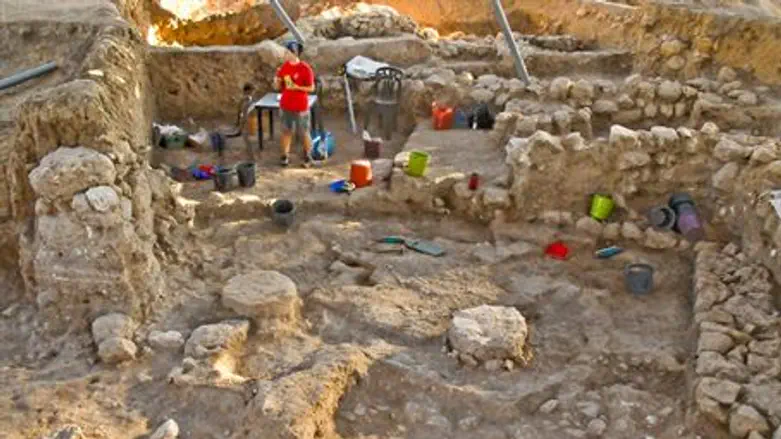
Bar Ilan University archaeologists have uncovered the ruins of a Philistine temple in the ancient city of Gath, home of the Biblical Goliath, buried in one of the largest tels (ancient ruin mounds) in Israel.

The temple and a number of ritual items dating back to the 10th century BCE were discovered at Tel Tsafit (Tell es-Safit/Gath) by Professor Aren Maeir of BIU's Martin (Szusz) Department of Land of Israel Studies and Archaeology and his international team. The tel is located about halfway between Ashkelon and Jerusalem, near Kiryat Gat along the southern coastal plain.
“Interestingly, the architectural design of this temple, with its two central pillars, is reminiscent of the architectural image that is described in the well-known Biblical story of Samson and the Philistines,” Maeir said. He added that the discovery could indicate that the story of Samson reflects a type of temple that was in use in Philistia at the time.

He also said that his team had found impressive evidence of an earthquake in the 8th century BCE, reminiscent of the earthquake mentioned in the Book of Amos 1:1. The team uncovered walls that were moved from their place and collapsed like a deck of cards as a result of the powerful earthquake – assessed at a magnitude of 8 on the Richter scale.
In addition, Maeir said, the summer's excavations have uncovered further evidence of the destruction of the city by Hazael, King of Aram Damascus, around 830 BCE, as mentioned in Kings II 12:18, as well as evidence of the first Philistine settlement in Canaan (around 1200 BCE).
Maeir has directed the excavations for the past 13 years. Participants in the dig this summer came from as far away as Australia, the U.S., Canada, Spain, Italy, Germany, Switzerland, Holland, Poland and the UK. There were also locals in the group, from Israel.
Volunteers are welcome to join the project – which is expected to run for more than another decade at least – for a minimum stay of two weeks. Participants are expected to take part in the various excavation-related activities as well as in the field trips and lectures that are given during the dig. In addition, it is also possible to register for an accredited field school program in archaeological science that is run during the excavation through Bar Ilan University.
During the excavation, the team stays in air conditioned rooms at nearby Kibbutz Revadim.
